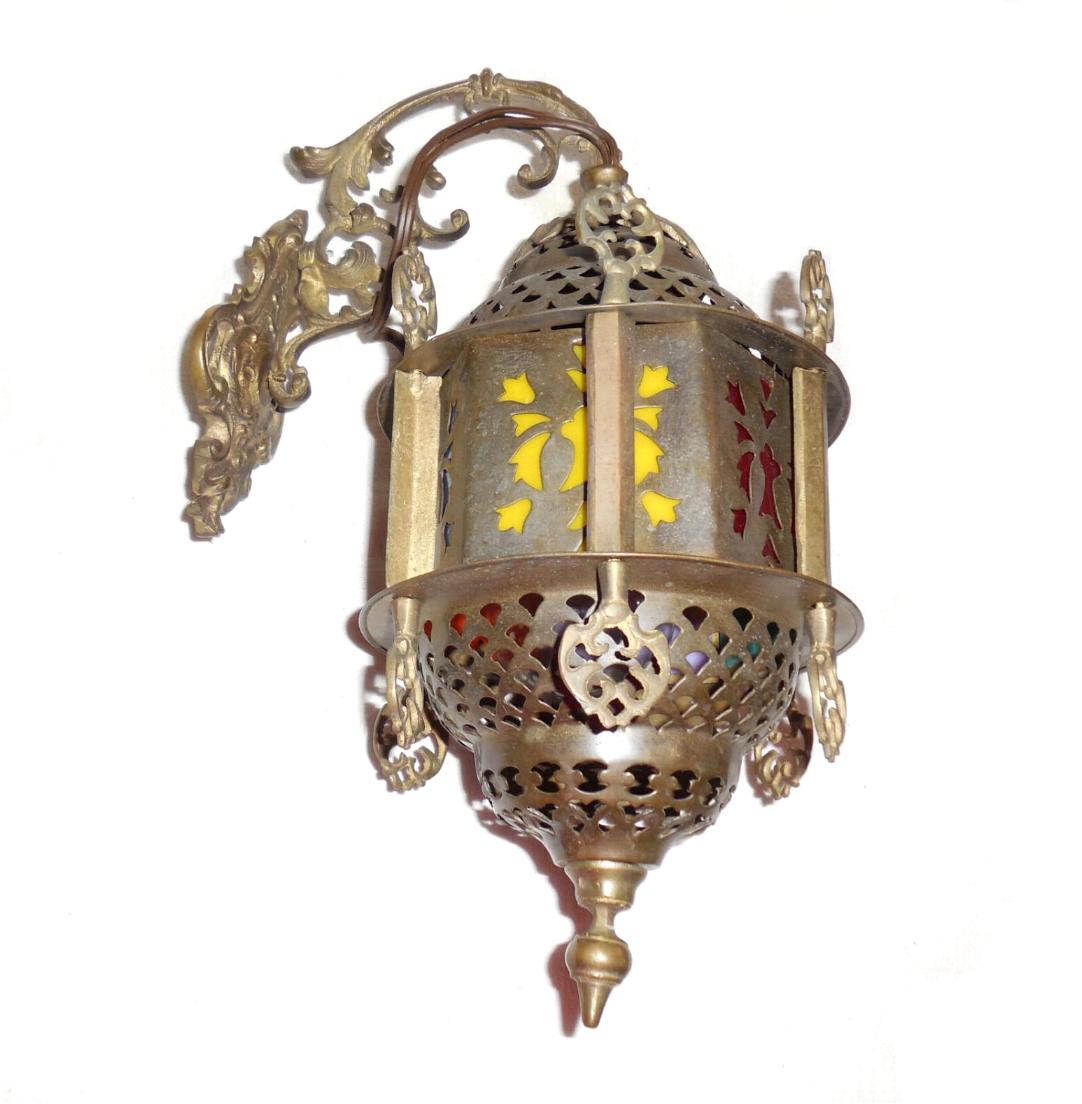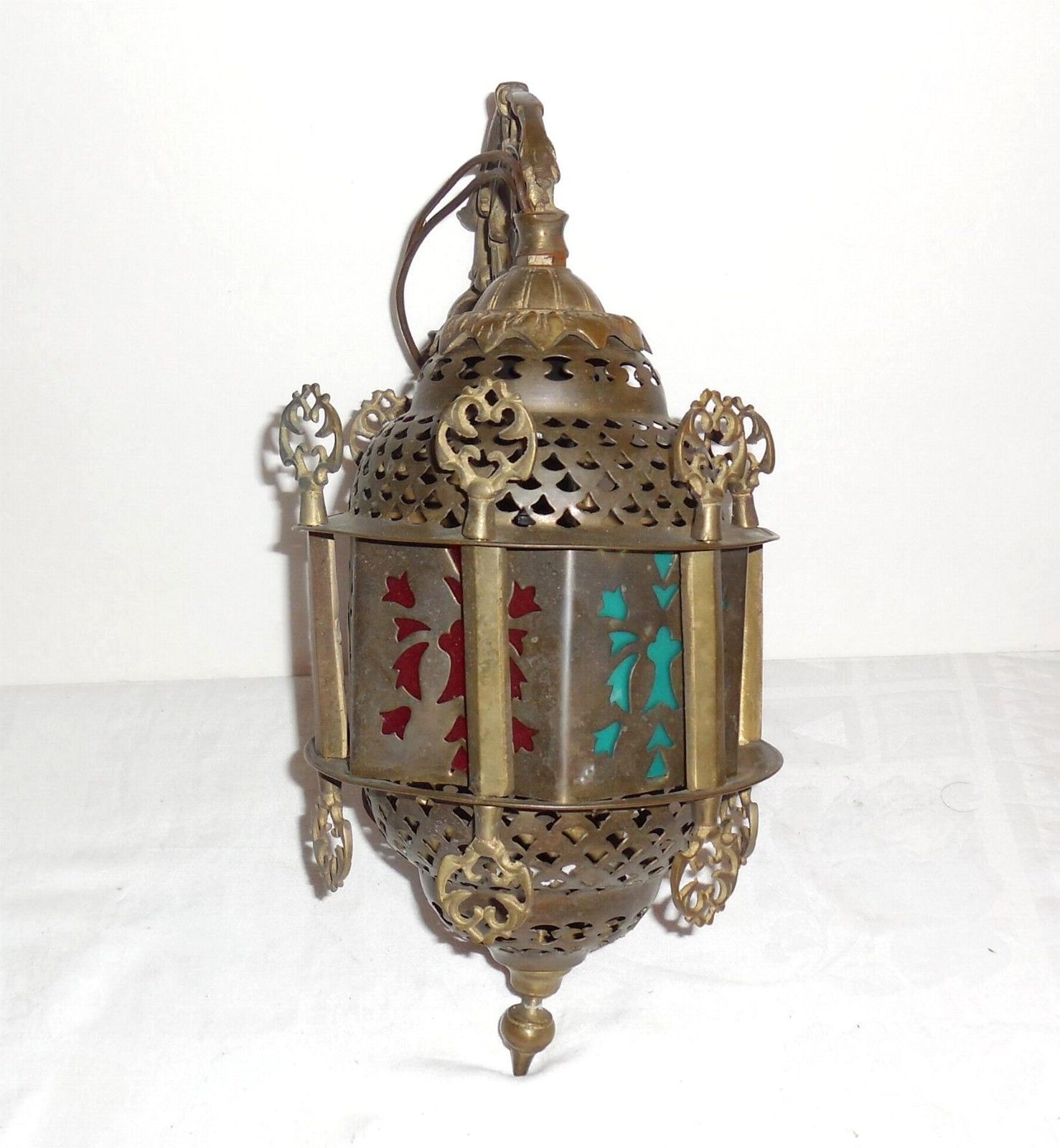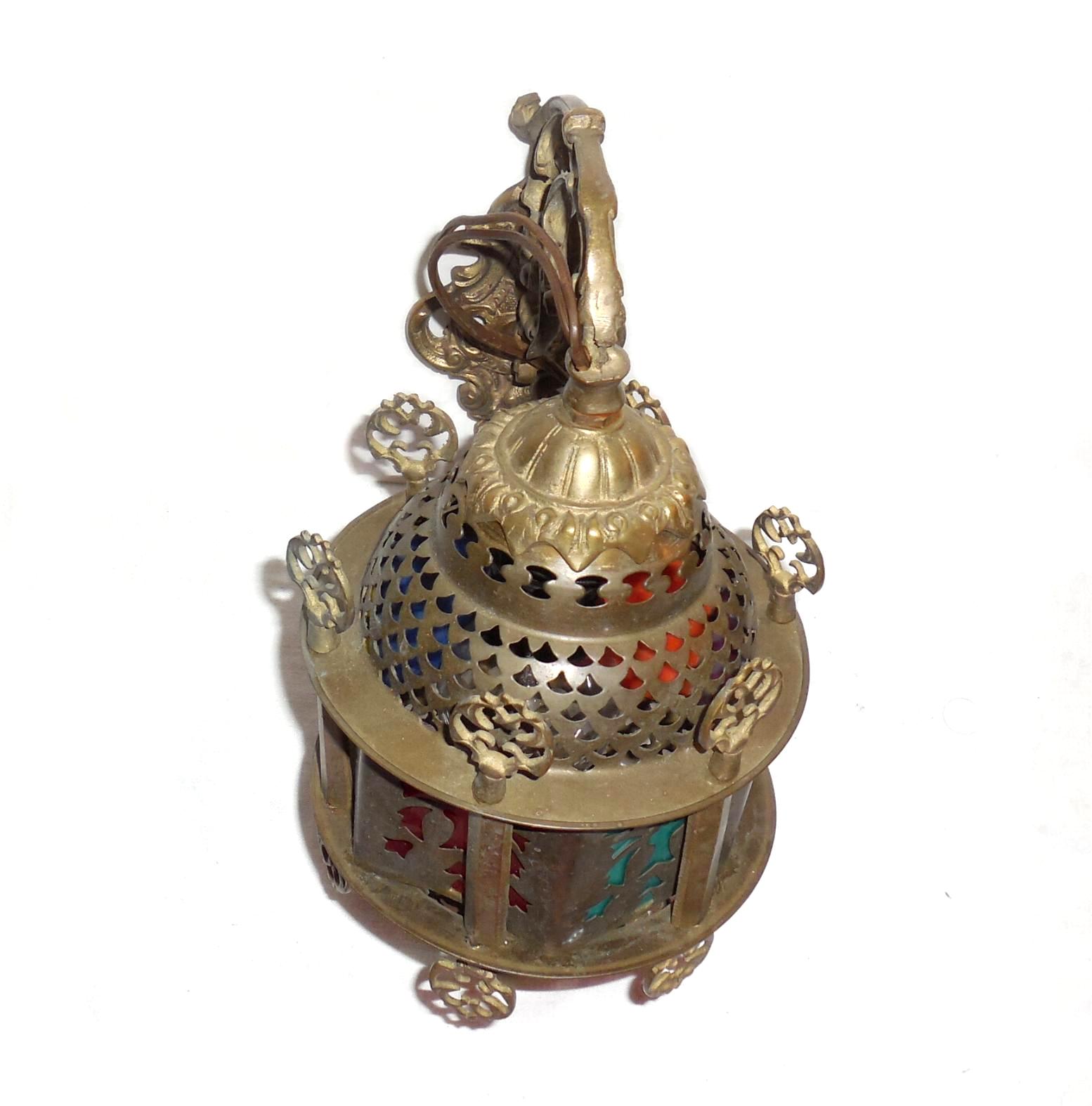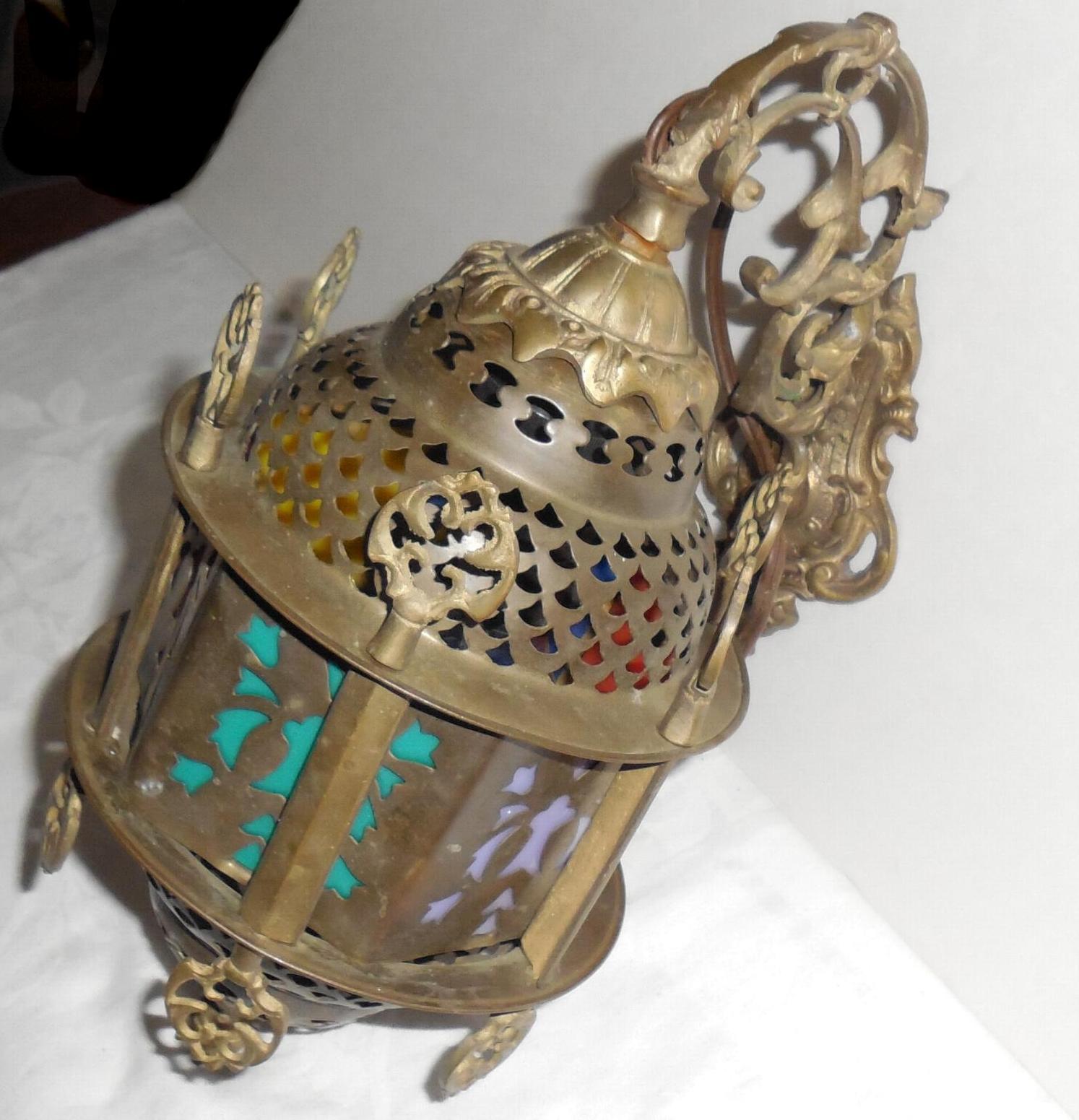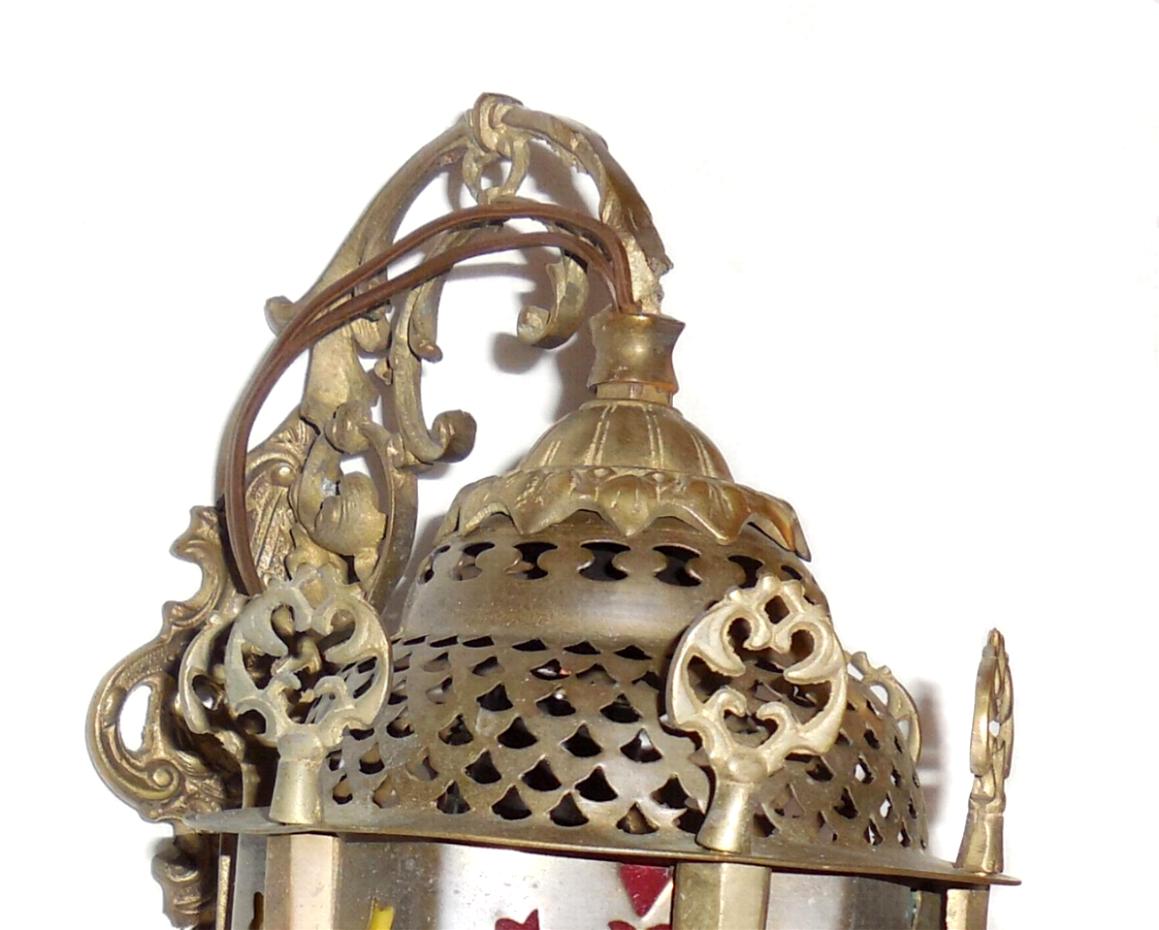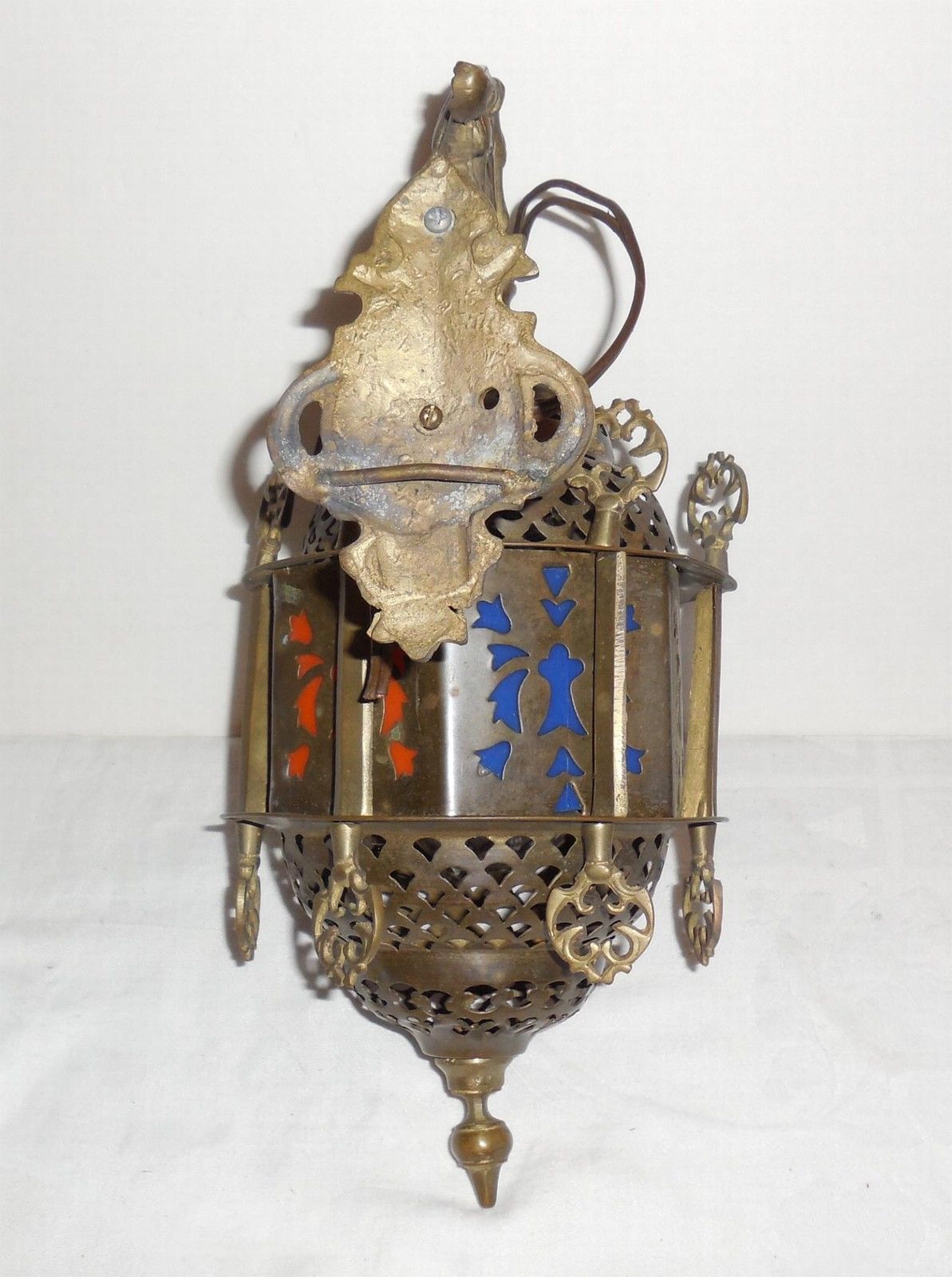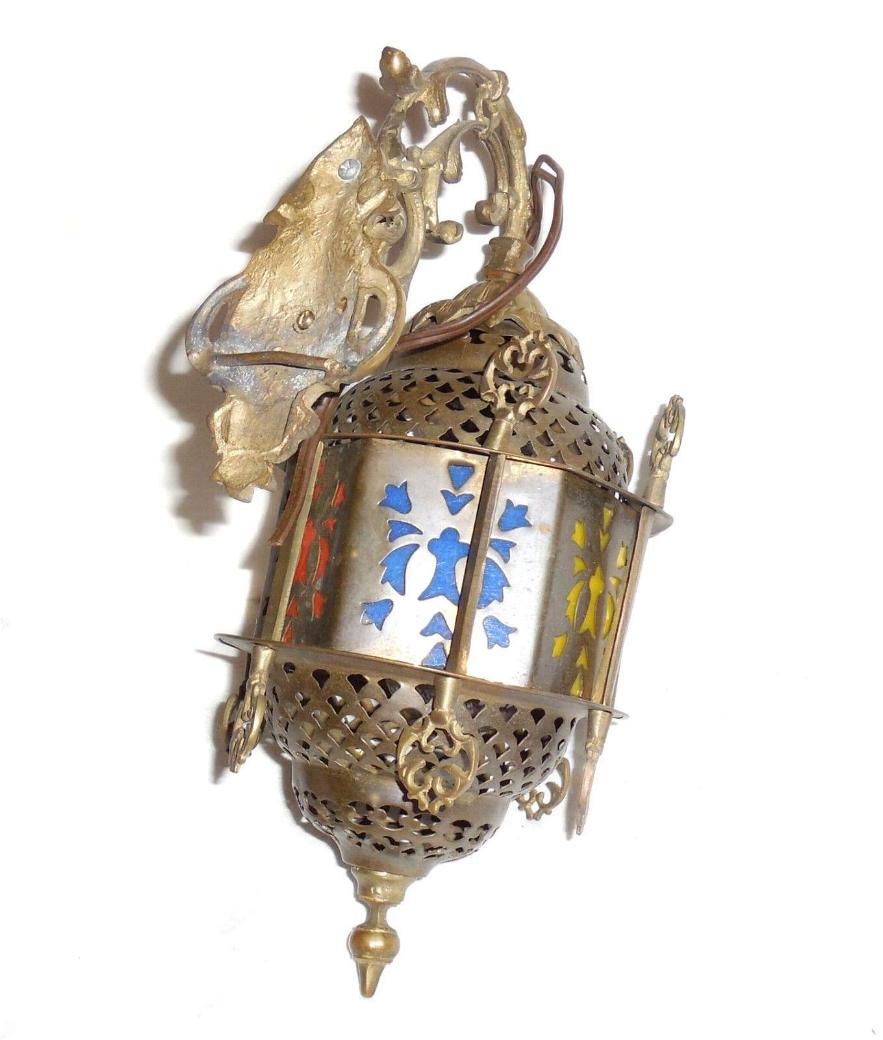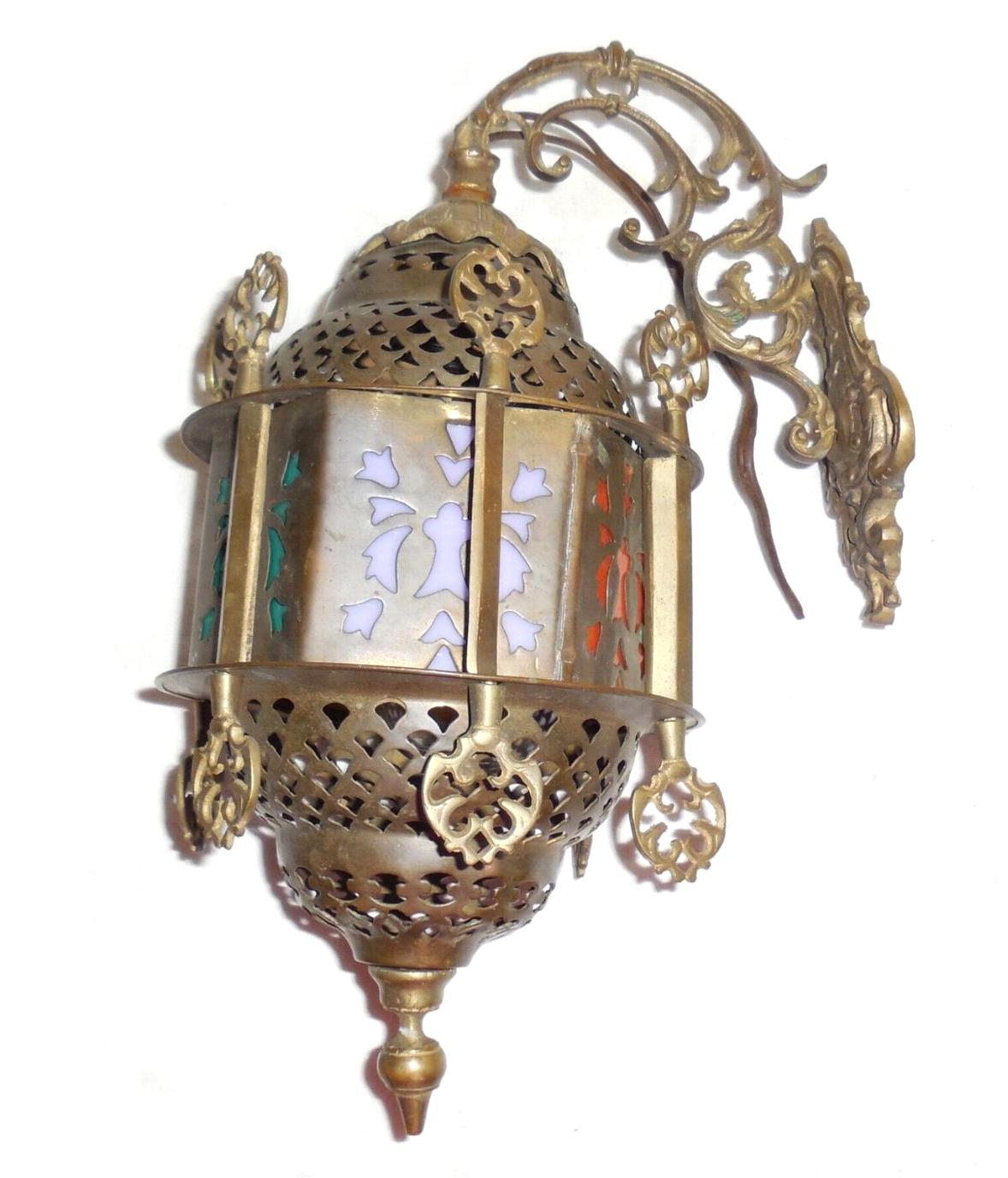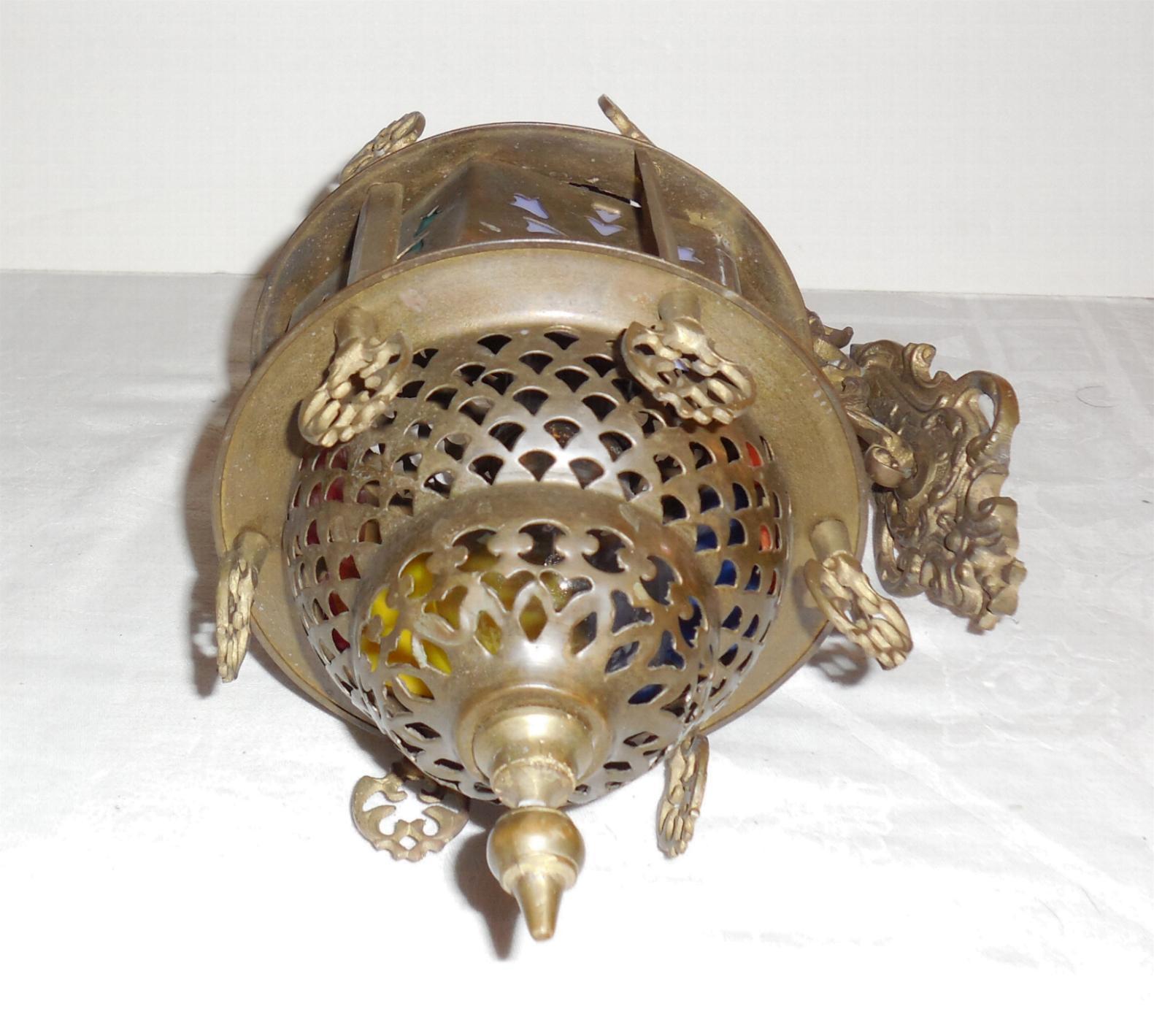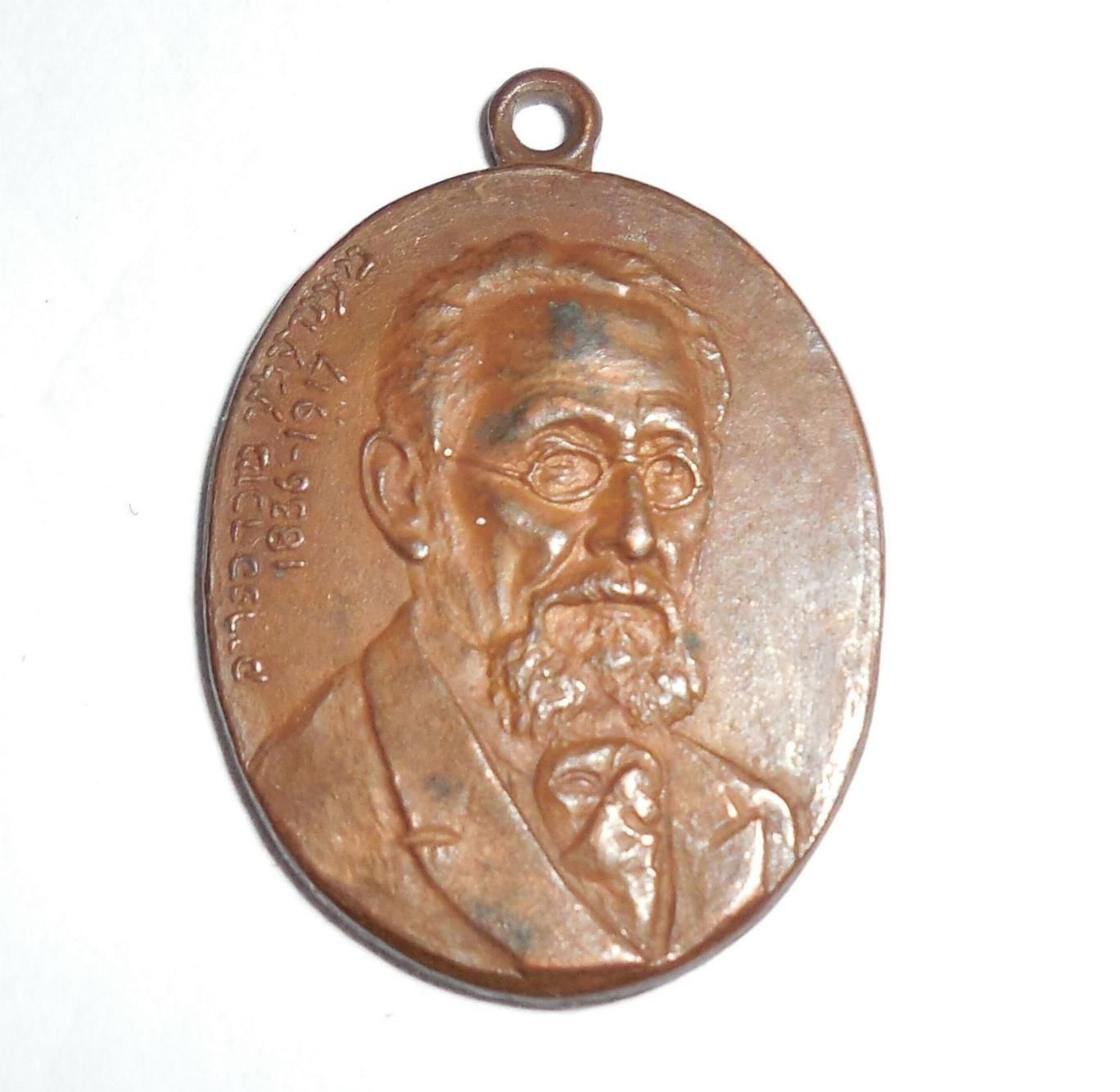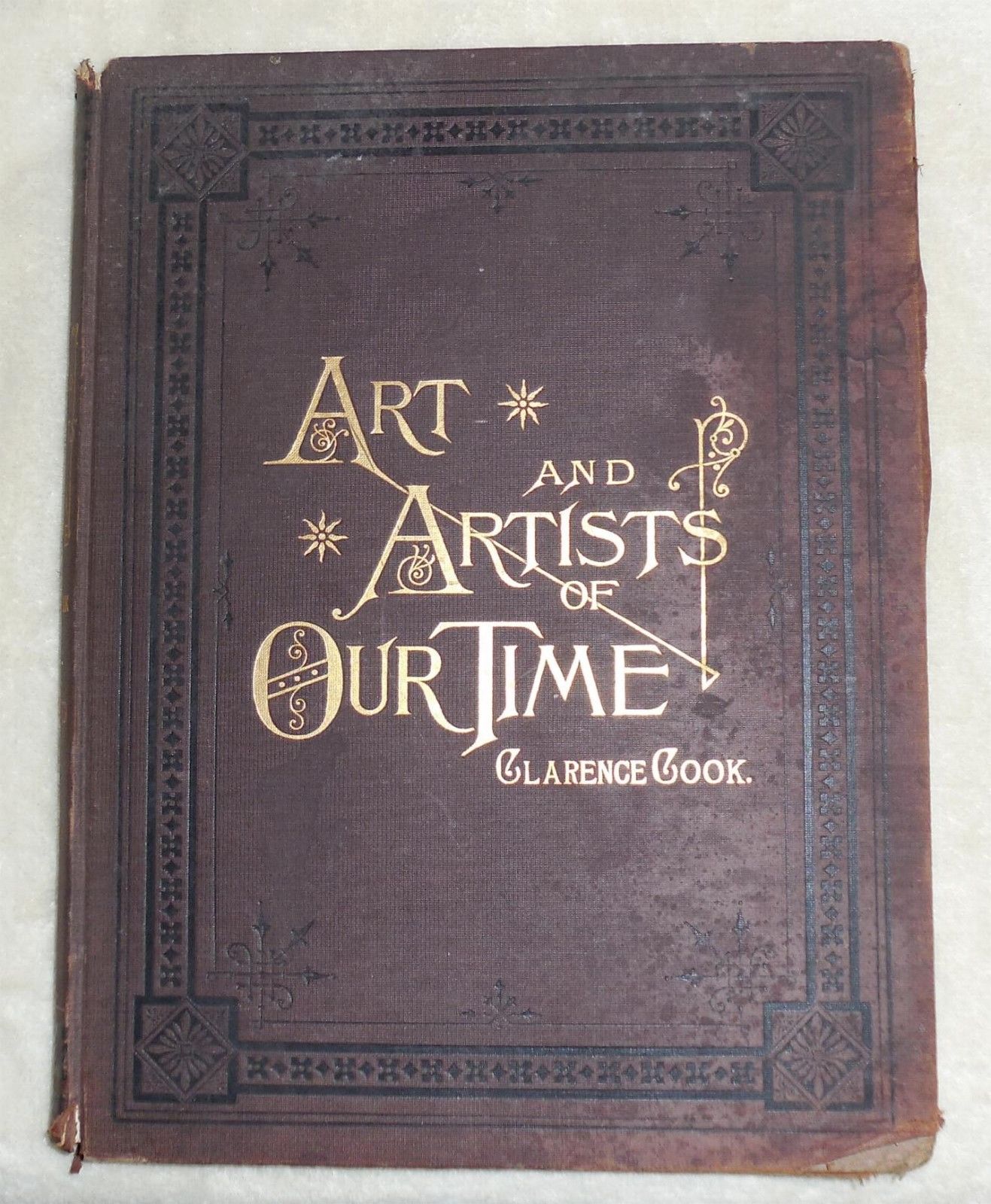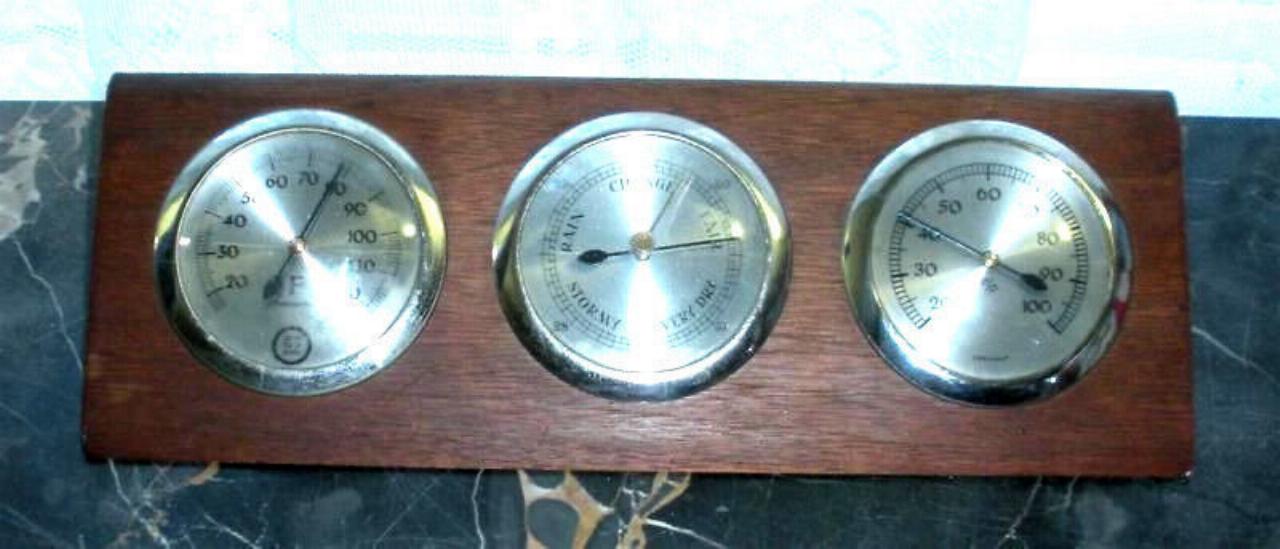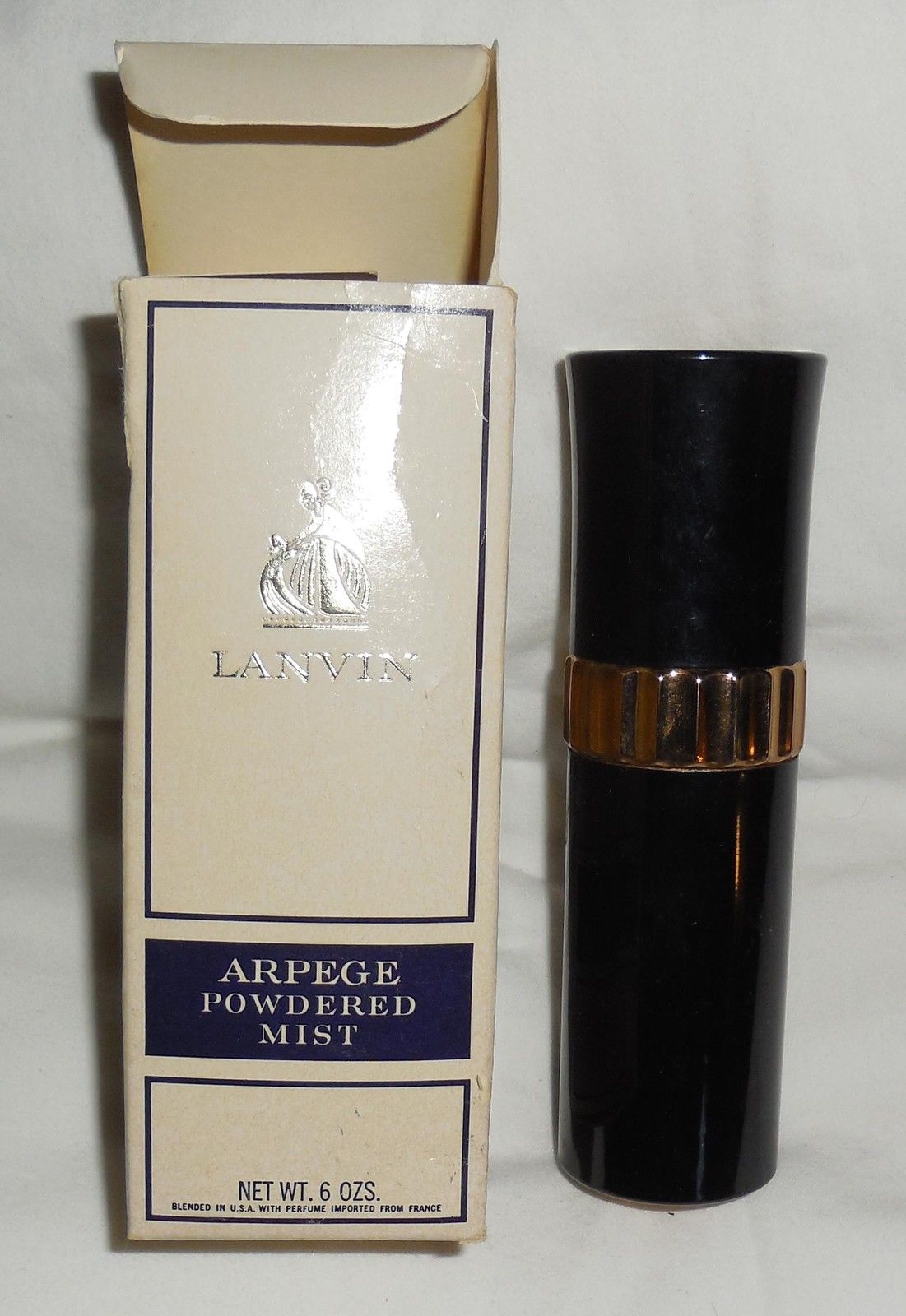Description
Vintage Brass Sconce Pendant Light Lamp Wall Fixture
History: (http://www.collectorsweekly.com/lamps/wall-sconces)
The words “wall lamps” and “sconces” are sometimes used interchangeably to describe lighting that is attached to a wall. Strictly speaking, though, the “lamp” is the thing that provides the illumination while the “sconce” is the piece that physically attaches to the wall.
To make things a bit more confusing, the word “bracket” is frequently used to describe the brass or cast-iron armatures that held kerosene lamps far enough away from walls to keep 19th-century homes from burning to the ground. Some of these brass wall brackets had arms that were designed to swing so the lamp could be moved in a 180-degree horizontal arc. Cast iron kerosene lamp wall brackets from the period often had double joints, and many of either type had reflectors behind the lamp’s glass chimney, to aim light in different directions.
Other types of brackets were known as doubles, which allowed two kerosene lamps to be mounted to the same fitting. At the opposite end of the spectrum was the kerosene nightlight, a miniature wall lamp made by Silver & Co., among other companies. In a kerosene nightlight, the bracket doubled as the reservoir for fuel, which often hung by a hook on the wall. The glass shade at the end of the delicate curved tubing ranged from pearl white to cobalt blue.
Early gas lamps from the late 19th century were also mounted to walls. Some of these gas lamps, which were called gasoliers, had three arms, each bearing a fixture. The brass work on these sconces was often ornate and detailed—floral patterns and curlicues were common motifs. The tubes that delivered gas to the various lights on a fixture were frequently designed to look like slender vines or branches, while the keys that regulated gas flow were cast to look like leaves or tassels.
Shades for gasoliers tended to be simple, ranging from a single glass bowl to a candle-shaped chimney to an upturned flower such as a lily. One especially interesting class of vintage gasolier was equipped with a nickel-plated brass oculist bracket, which swiveled vertically as well as horizontally and took its name from its use by opticians, as well as doctors and dentists.
When electricity started to become more common at the end of the 19th century, electrical wall lamps followed. In particular, the invention of the tungsten light bulb in 1907 spurred the demand for lamps of all sorts, including those attached to walls (tungsten used half the electricity of earlier incandescent models). Lamps from this era were designed in the Arts and Crafts style, as well as Mission and Art Nouveau.
One of the great things about electricity was that wall lamps could now have shade instead of just a chimney, which by definition had to point up. Shades could now point down, illuminating rooms in completely different ways than kerosene and gas had permitted, although some shades still opened to the ceiling as style and interior-decorating schemes dictated. Shades could also be made out of materials other than glass; parchment and silk shades, for example, were quite typical and popular. Other shades harkened back the age of fire illumination, with bulbs shaped like flickering flames.
One of the most visually arresting periods for vintage wall lamps and sconces was Art Deco. During this era, some lamps were all shade, with the fixture hidden from view behind it. White glass sconces with painted black decorations were typical. In other cases, such as for bathrooms, frosted glass shades were paired with rust-resistant, chrome-over-cast-brass fixtures.
